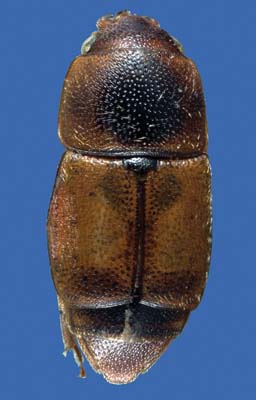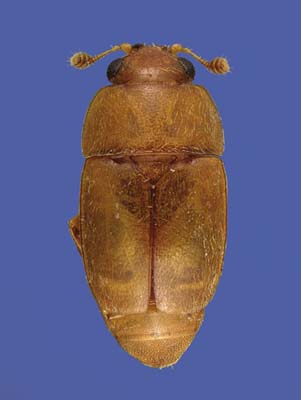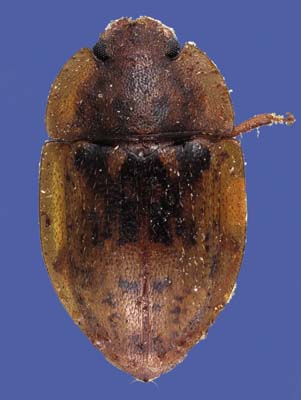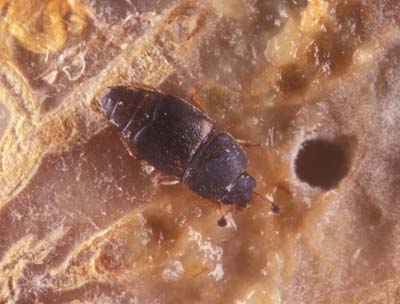Sap beetle, Carpophilus fumatus
Sap beetle, Epuraea luteolus
Sap beetle, Lobiopa insularis
Sap beetle, Urophorus humeralis
(Coleoptera: Nitidulidae)
Sap beetles are pests of field crops and stored products. Sap beetles are found in many habitats feeding on flowers and fruits, and decaying and fermenting plant tissues. Sap beetles are usually considered minor pests but a large population can be a major cause of economic damage. The main impact of sap beetles is the damage caused by the contamination of products ready for sale. The eggs are milky white and sausage shaped. The larvae are white with a light brown head. The pupae are white and later turn tan before they emerge as adults. The adults are variable in appearance, but are often black or black with large orange spots.
Sap beetles have a wide host range including peaches, figs, blueberries, raspberries, strawberries, pineapples, melons, field corn, and sweet corn. Sap beetles can cause both direct and indirect damage. Sap beetles not only cause damage to the fruit but also allow an entry point for other pathogens. Sap beetles may also vector mycotoxin-producing fungi to corn and strawberries. They are common contaminants of harvested food plants, and are usually attracted to damaged fruit. Management of sap beetles may be achieved by cultural control such as sanitation and host plant resistance. Chemical control is recommended in situations where high populations of the beetles are expected to occur. Some natural biological control occurs but may not provide sufficient control under some circumstances.
Images
To save the Web-optimized images shown below to your hard drive:
PC users: right click to "Save Picture (or Image) As..."
Mac users: click and drag to your desktop.
Copyright © 2005 University of Florida



